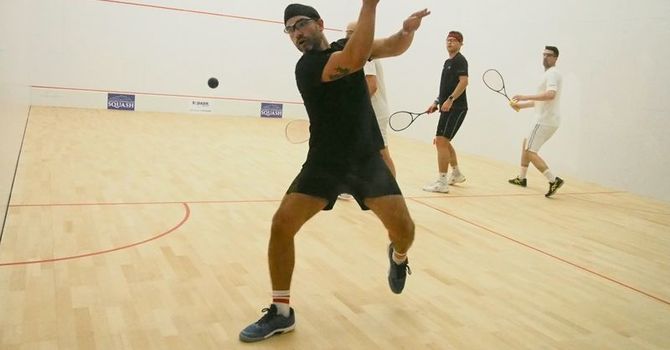
Did you know that dizziness is the second most common complaint when visiting a doctor? (Pain is #1.) Vertigo is a very common cause of dizziness. Studies estimate that between 20% and 40% of adults will experience vertigo at least once in their lifetime! Women are slightly more likely to experience vertigo than men. Not only is vertigo very unpleasant (to say the least), having vertigo also increases your risk of falls and has the possibility of affecting many areas of your life, including your sports.
What is vertigo?
Vertigo is actually not the correct name of the condition. Vertigo is a sensation of motion when your body is still. The medical term for the condition is Benign Paroxysmal Positional Vertigo (or BPPV for short). Despite this, I will use the term vertigo and BPPV interchangeably throughout the blog post.
What is BPPV?
BPPV is a condition in which an individual has crystals free floating in their inner ear in an area in which they do not belong. To understand this better, let me explain a simplified version of how the inner ear works. In your inner ear, you have a room in which there are hair structures with glue or gelatin on top and sticking to the glue are many calcium carbonate crystals. Let's say you are in your ferrari and you step on the accellerator, the weight of the crystals and the gelatin will pull on the hair structures which sends a message to your brain that you are accellerating. The opposite happens if you slam on your brakes; this is one way your brain knows you are decellerating. You have another room in your inner ear shaped like a hula hoop (there are 3 on each side, each in a different plane). This room is used to detect rotation. On the outer edge of the hula hoop there are also hair structures, but in this room, there are no crystals or glue, just a water-like fluid. Imagine if you took a water filled hula hoop and twisted it in one direction, then the other. The hairs would swish with the water. When the hairs move, this sends a message to your brain that you are rotating in a certain direction. Common rotations we do in our daily life include getting into bed, getting out of bed, rolling over in bed, bending over, looking up and turning our head quickly. BPPV happens when some of the crystals from the first room come off (this happens for various reasons) and then gets stuck in the hula hoop room. The hula hoop room normally doesn't have crystals, therefore gravity doesn't affect your sense of rotating normally. Imagine that hula hoop now has a marble in it. If you change your head position in relation to gravity, the marble will move to the lowest point. In the process, the marble will spin the water, which in turn moves the hairs, and this sends a message to your brain that you are rotating in a certain direction (until the marble settles at the bottom, then the sensation goes away until you move again). This is what happens when people have vertigo. They change their head position (say getting out of bed or rolling over in bed) and the crystals now have to sink to the bottom-most position of the hula hoop, thus moving the water and hair structures. The person will feel as if the room is spinning until the crystals settle. If you have ever had a few too many drinks and had "the spins", this is a very similar sensation that people who suffer from vertigo get. (Fun fact: if you are curious what causes "the spins" it is when the amount of alcohol in your system causes the density of the fluid in your inner ear to change so when you lie down, the hair structures deflect as they are now heavier than the fluid and make you feel like you are spinning).
What are the most common symptoms of vertigo?
The most common sensation is a room spinning sensation which occurs with changes in head position. Not everyone feels like the room is spinning. Some people say they are spinning. Some people describe a wavy sensation. The room spinning sensation lasts seconds, however a feeling of nausea and disequilibrium can last longer.
What should I do if I have symptoms of vertigo?
If you have never been seen by a doctor for vertigo and this is your first time feeling this sensation, I recommend everyone go to the ER to make sure you aren't having a stroke. I have a friend who at 45 thought she was having vertigo and went to the ER. They assumed due to her age that she had vertigo and sent her home. In actuality, she was having a cerebellar stroke due to an unknown heart attack! They didn't get it right in my friend's case (most likely due to her overall "good" health and young age), but I still think it's better to be safe than sorry. If this isn't your first time, or your symptoms have been present for months and slowly seem to be getting somewhat less intense, then that is when I recommend coming to PT.
Why should I go to PT for vertigo?
80% of the time, we can successfully treat vertigo with 1 or 2 treatments! Some people try to treat it on their own by googling treatments. I don't recommend this is for three main reasons. First of all, I screen for other causes of dizziness including central causes (think brain) when you come to PT for vertigo. The second reason is that there are 6 possible hula hoops (3 on each side) that the crystals can get stuck in. If you do the treatment for the wrong hula hoop, or frankly do it wrong, you can make yourself worse and make it more difficult to treat by converting the crystals from 1 hula hoop to 2! Finally, it is easy for a physical therapist to treat vertigo correctly and help you get back to normally quickly.
Can I do anything to prevent vertigo?
Yes and no. Unfortunately, those who have had vertigo are likely to have it return at some point. When you come in for your PT visit, we can go over your risk factors and things you could do to lessen your chance of recurrence.
So if you get a room spinning sensation when you change your head position (in relation to gravity) of short duration (seconds), then go to the ER if you have never experienced the sensation before or had a doctor confirm that it is vertigo. Otherwise, schedule an appointment with PT and let's get you back in the game!

Keely Behning
Contact Me




